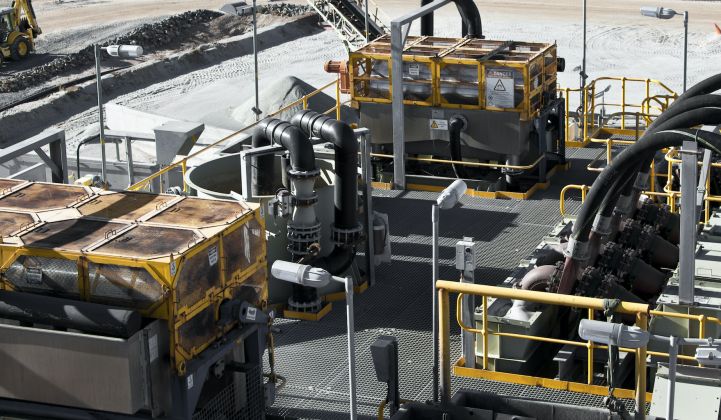Materials experts have moved to quell lithium supply fears in the face of a continuing slide in the value of the mineral.
Robert Mintak, CEO of Standard Lithium, a Vancouver, Canada-based lithium production startup, said new capacity would likely still come online despite price drops. “There will be projects built,” he said, although “it’s not going to be easy either way.”
Lithium is one of several lithium-ion battery materials with potential supply-chain challenges that could affect the growth of the electric vehicle and stationary storage markets.
Up until the beginning of this year, lithium's price had roughly doubled since the beginning of 2016. And in April, the ratings firm Moody’s said demand for lithium, along with cobalt, copper and nickel, was still rising as carmakers accelerated production of electric vehicles.
“Significant investment in exploration and development of new mines will be necessary to meet the rising metal demand,” it said.
Paradoxically, though, the main challenge for lithium right now is oversupply. The materials intelligence service Metal Bulletin this month blamed “sluggish demand from downstream buyers” for an ongoing fall in the spot price of battery-grade lithium carbonate this year.
In China, the world’s largest consumer of lithium carbonate, the price of the material has dropped by more than 44 percent since December 2017, from ¥180,000 (USD $26,000) down to ¥100,000 ($14,500) per ton, Metal Bulletin data shows. Outside China, prices have leveled off.
While low lithium prices should be a good thing for the lithium-ion battery industry, some analysts worry that price drops will discourage new investments in production facilities and thus create shortages once demand picks up.
Two reports this year have sounded the alarm over the dangers of oversupply. In February, the investment bank Morgan Stanley predicted global lithium prices would drop 45 percent by 2021 on the back of an estimated 500,000 tons of new production a year from Chile.
And this month, Macquarie Research issued a note saying the lithium market was “sleepwalking into a tsunami of oversupply.”
The lithium production industry hit back in both cases. In February, the mining giant Albemarle said Morgan Stanley had underestimated 2025 lithium demand by 222,000 tons. This month, Argosy Minerals Managing Director Jerko Zuvela brushed off Macquarie’s assessment.
“The lithium chemicals end-use product is in short supply,” he was reported as saying in the Australian mining journal Stockhead. “There’s not enough of it and you can’t produce it fast enough.”
Nevertheless, the bearish reports have added to investor unease over lithium pricing trends. The world’s largest lithium producer, Sociedad Quimica y Minera of Chile, saw almost $1.3 billion wiped off its market value within a week of the Morgan Stanley note.
And so far this year, around 75 percent of the lithium-related companies on the Australian stock exchange have seen their value fall, according to Stockhead. “That report from Morgan Stanley put the brakes on a lot of money,” said Mintak. ”We took a big hit on our market cap.”
Ironically, he said, the impact of the oversupply reports is “almost a guarantee there won’t be a supply glut,” because a fair amount of investment earmarked for new projects may now be put on hold.
Companies such as Standard Lithium have a vested interest in bolstering a bullish view of the market, though, because they need eager investors to pump money into new projects. “Billions need to be invested,” Mintak admitted.
While pundits debate whether lithium is heading for a glut or a drought, Andrew Miller, a senior analyst at Benchmark Mineral Intelligence in London, said: “Longer-term, we still expect the market to be finely balanced.”
Chinese price reductions and recent increases in production “have led some to think there is a flood of new material in the market,” he said, but “it's important not to be distracted by Chinese price volatility too much.”
In reality, he said, “There is some increased production from brine resources in South America and China, but most of this is technical-grade carbonate and the price decreases are being compounded by slower-than-expected demand growth.”




